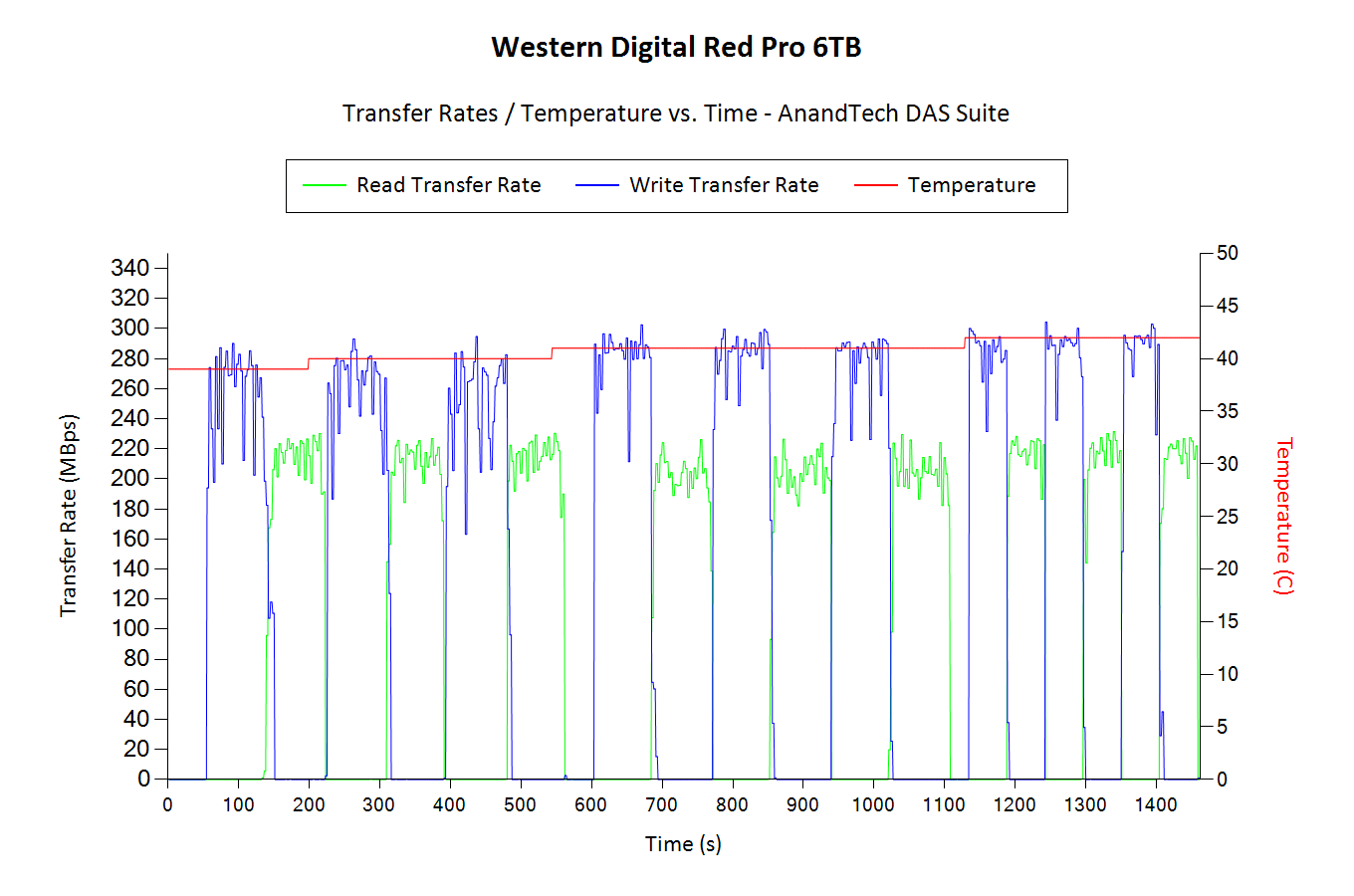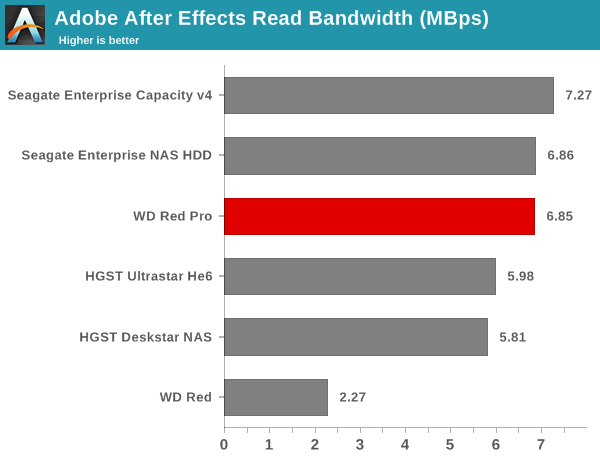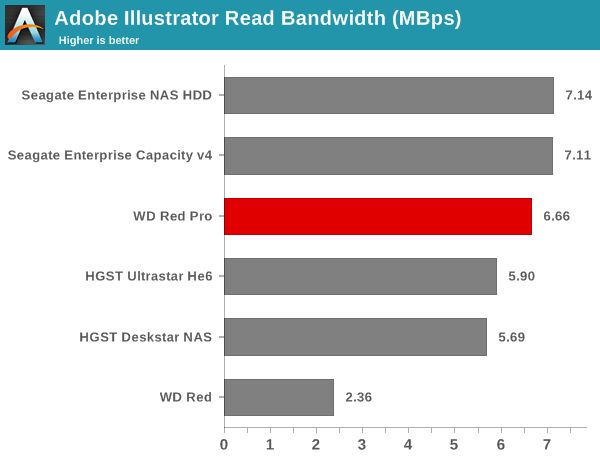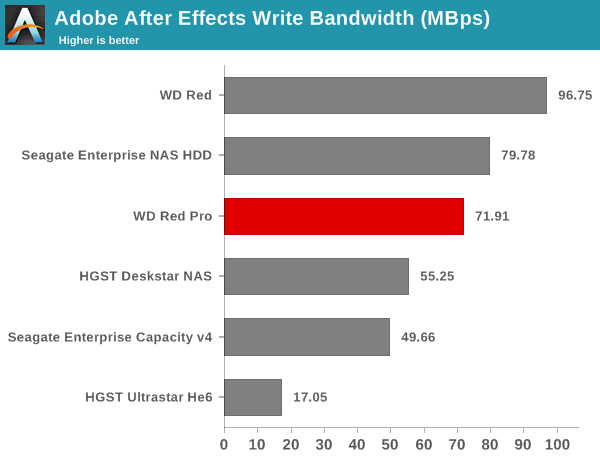WD Red Pro 6 TB Review - High Performance NAS HDD Gets a Capacity Bump
by Ganesh T S on September 7, 2015 8:00 AM EST- Posted in
- NAS
- Storage
- HDDs
- Western Digital
Single Client Access - DAS Benchmarks
The WD Red Pro was connected to a 6 Gbps SATA port off the PCH in our DAS testbed. After formatting in NTFS, it was subject to our DAS test suite. While processing our DAS suite, we also recorded the instantaneous transfer rates and temperature of the drive. Compared to other NAS drives at the same capacity point, write transfers show higher instantaneous speeds due to a combination of the firmware and the 128 MB cache inside the disk. However, sustained write rates are comparable to other 6TB drives. The temperature of the unit at the end of the transfers, despite being blow 45C, is higher than any of the other drives at the same capacity point.

The graphs below present the average transfer rates for the various workloads and how they compare against other HDDs of the same capacity that have been evaluated before.






PCMark 8 Storage Traces








In the real-life workloads, the caching behavior enables the WD Red Pro to score better than the competitors in almost all the write tests. Read scenarios show it coming in the middle of the pack.










62 Comments
View All Comments
Souka - Tuesday, September 8, 2015 - link
It would be even louder with four of these WD Red Pro drives!nagi603 - Monday, October 5, 2015 - link
The problem might also lie with your NAS: insufficient decoupling will lead to very nasty vibration, as is insufficient dampening or the use of not stiff enough components.beginner99 - Tuesday, September 8, 2015 - link
Well with the Pro only $33 more it's a no brainer. The 5 years warranty alone will make that a profitable investment alone.Visual - Tuesday, September 8, 2015 - link
Important details are missing from the article. It should be the first thing covered for drives of such capacities - make it clear if they are using a shingled write method requiring rewrites of large blocks for small random writes.Morawka - Tuesday, September 8, 2015 - link
anyone remember when all seagate consumer drives had 5 year warranties.. it was great. now we are lucky to get a 3 year warranty.FunBunny2 - Tuesday, September 8, 2015 - link
planned obsolescence is a wonderful thing. just ask Apple.star-affinity - Tuesday, September 8, 2015 - link
In what way is Apple worse than others when it comes to ”planned obsolescence”?valinor89 - Tuesday, September 8, 2015 - link
As far as I know Apple was the first mass consumer company to embrace the practice. Or at least the best known for it. Usually gadgets of other companyes were expected to be superceeded by advancing technology, not designed to fail after x time... One of the most famous examples was the Ipod Nano case.The practice existed before but apple put it in the spotlight.
Gigaplex - Sunday, September 13, 2015 - link
Apple is rarely the first to do anything. They certainly weren't the first to embrace planned obsolescence.Hannibal80 - Tuesday, September 8, 2015 - link
Why not moving to a 10gbe for the nas test? I think that for a soho scenario could make sense, with a direct 10gb connection between workstation and nas and classic 1gb link among remaining clients. Just my 2 cents